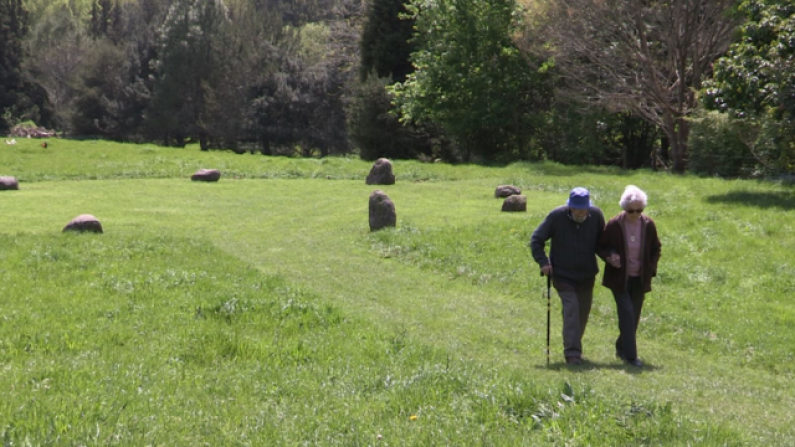Taitua Arboretum - An oral history with John and Bunny Mortimer

John and Bunny Mortimer enjoying their arboretum, 2016
Taitua Arboretum is a cherished taonga nestled in the outskirts of Kirikiriroa, gifted to Hamilton City by John and Bunny Mortimer in 1997. In 2016, the Mortimers sat down with our Oral History Librarian to reflect on the land’s remarkable transformation and the values that shaped its legacy.
Bunny grew up on the family farm, originally called Westlands, and later inherited half of it along with her brother, Stewart (Tua). Together with John, she envisioned something more than pasture. While part of the land became a golf course bearing the Westlands name, the remainder was open paddocks scattered with blackberry and tea tree. They reimagined it as a sanctuary for animals and people alike.
Initially planting trees to provide shelter for their cattle, the Mortimers found themselves increasingly inspired by their travels abroad. They returned home with seeds, ideas, and a growing vision. Influenced by the tranquil beauty of the English countryside, they created a pond with an island at its centre, affectionately named Lake Brown or Roto Paraone. Their goal was simple yet profound: to create a beautiful place to live for themselves, for their animals, and for the community. John, a former president of the Farm Forestry Association, often hosted field days at the property. As interest in the space grew, they developed walking tracks and welcomed visitors, who appreciated the relaxed, natural environment. People came to reconnect with the land, drawn to its serene beauty.
In gifting Taitua to the city, the Mortimers expressed one key wish: that it remain informal and untouched by over-development. Their vision was a peaceful retreat, where nature is allowed to flourish freely and future generations can enjoy its unspoiled charm.
Today, Taitua Arboretum stands as a living legacy. It is a testament to the deep connection to the land and their generous spirit of sharing it with others.
This article was originally shared in our bimonthly newsletter, Ngaa Koorero Tuku Iho Archives and Reference. Subscribe to receive updates, news and stories straight to your inbox.
